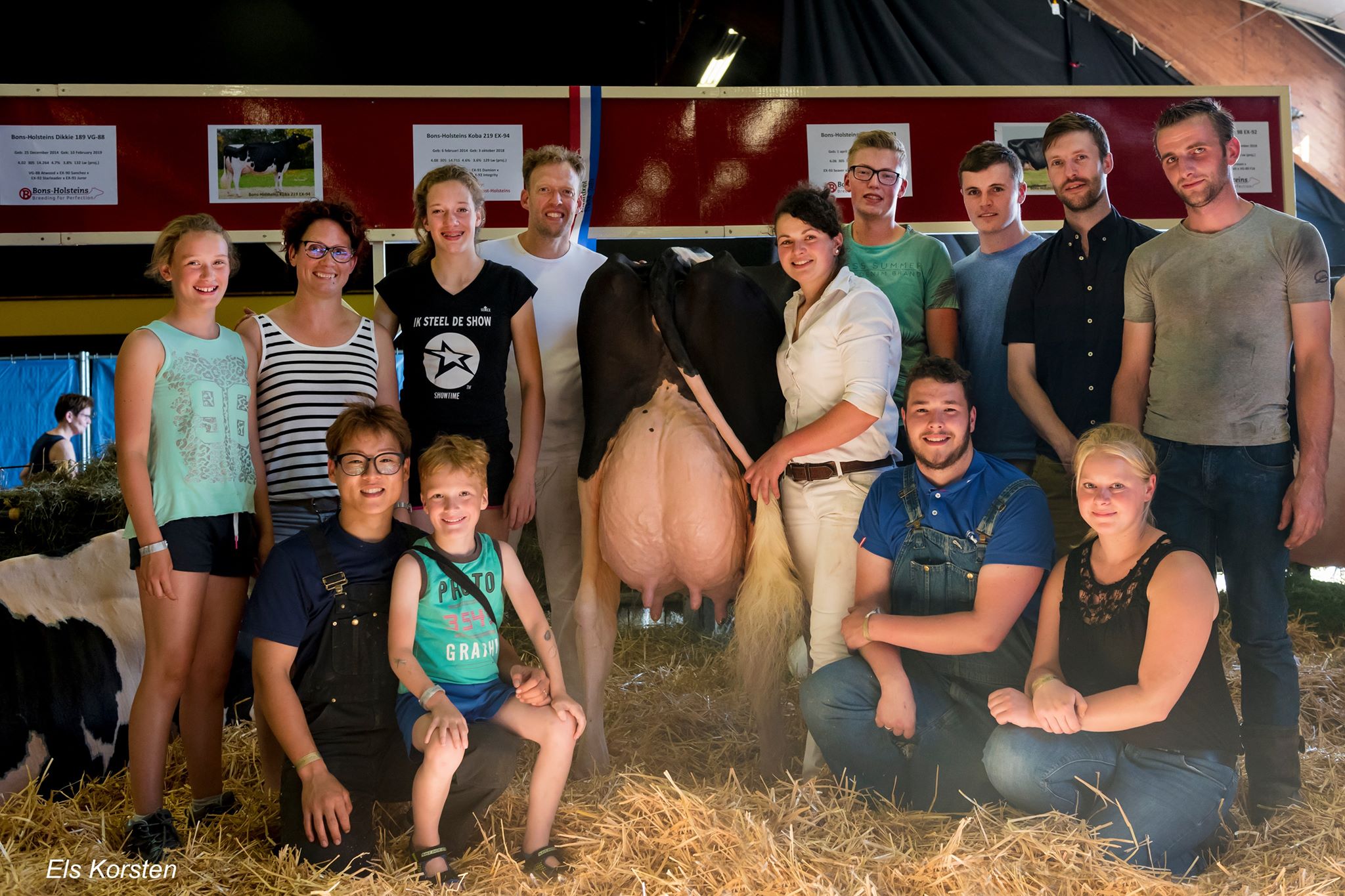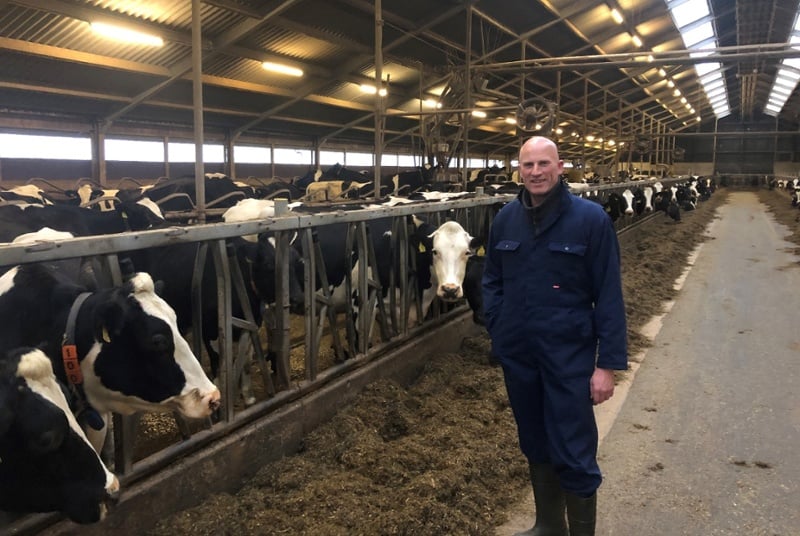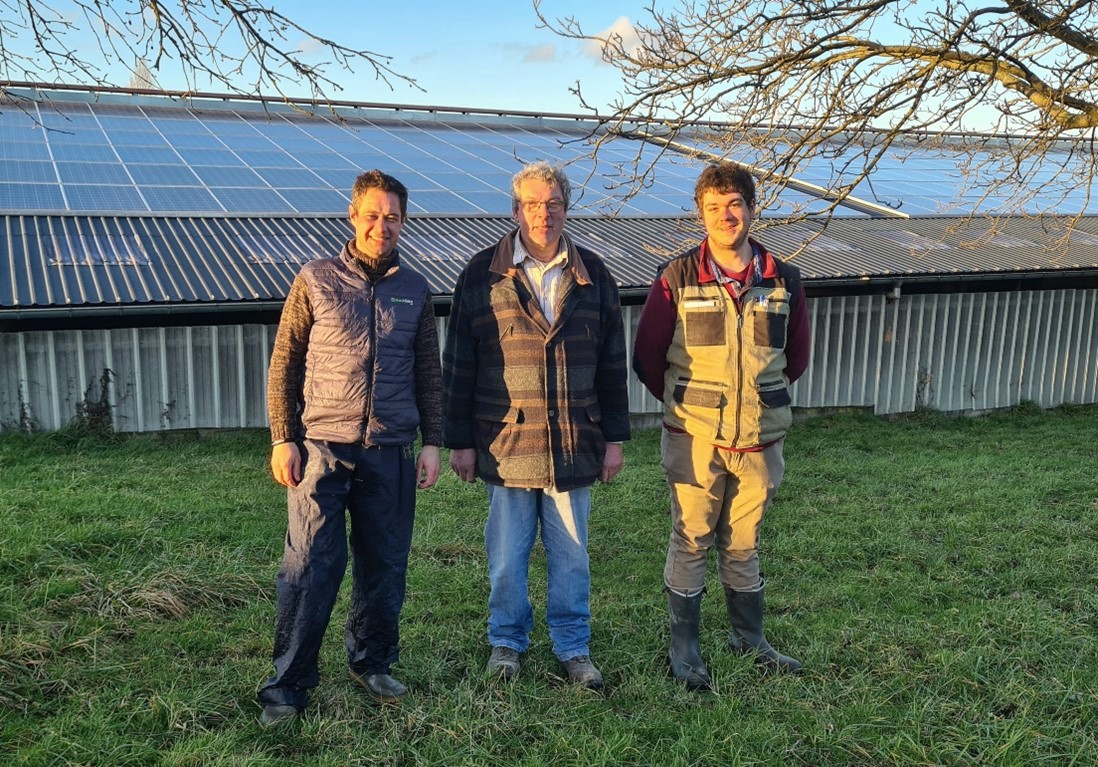Jamie van't Hoff and his partner Mandy van Mersbergen have been working full-time on the farm for four years striving to increase milk production without compromising on animal health. Jamie explains: "Milk fever and subclinical milk fever have always caused us challenges on farm. Springtime saw us dealing with 14 sick cows due to milk fever (in a herd of 200 cows). At that point I said: this has to change." So Jamie decided to contact Arnout Dekker, a veterinarian who works for the US company Phibro, a company specialising in animal health and nutrition.

Mandy and Jamie adopt a 'high input - high output' approach, investing heavily in both feed and technology. "We can make the cow look like a Ferrari genetically, but if we feed it like a Fiat Panda, then we do not achieve anywhere near the potential for the cow, or us. A Ferrari should be fed like a Ferrari," Jamie notes. He continuously reviews rations and input adjustments to ensure his cows get enough nutrients and perform optimally. The goal? An average of 40 litres of milk per cow per day, with a high fat and protein content.
Successful results come from good management. This enables strategic investment in technology and innovation for further growth and future-proofing. Jamie goes on: "By striving for efficiency at every point, we hope to improve the farm step by step. For example, we want to renovate the old cow barn to house our young stock and dry cows there. Our improved performance and financial results have already allowed us to invest in fans for the cows, manure robots, a self-propelled feed wagon and a feed pushing robot a few years ago. Moreover, we recently installed a fourth milking robot in the barn. This has led to a more relaxed barn and there is enough time to graze all cows in the summer and fresh cows can be milked more often as well." The impact of these investments is clearly visible. "For example, when our feed pusher robot is not working, it costs us one and a half litres of milk per cow. The robot pushes the feed every two hours and reduces competition and stress at the feed fence because now even the lower ranking cows get a chance to eat well," Jamie explains.
A variety of diseases have held back performance on the farm for generations. But with a renewed outlook on the farm, Jamie has been able to turn the tide. He found the motivation to look for help and invested in a new ideas and concepts.
For Jamie, the search for a solution against milk fever meant reviewing, calculating and testing many rations and concepts. Many rations, despite all of the theoretical benefits, still had their practical limitations. Some saw cows gaining body condition during the dry period, others contained straight anionic salts which were not palatable and the cows did not like, or feed intake was disappointing," says Jamie. Phibro, on the other hand, created a ration that delivered immediately. The ration did not cause weight gain in the cows, led to a high dry matter intake, and a urine pH level that dropped back between 6 and 5.5 so helping control subclinical, as well as clinical milk fever.
Jamie’s goal is to offer a high quality and palatable ration to dry cows, and especially close-up cows. "During the dry period, the ration is obviously of lower energy content and only after she calves can she move to the full dairy cow ration. This milking diet consists of grass, maize, brewers grains, pressed (moist) sugarbeet pulp, soy and barley. The diet is designed to deliver a high energy content, which is essential for a smooth start to lactation." Ensuring high dry matter intake during the dry period, and especially immediately pre-calving and immediately after calving promotes healthy milk production and minimises the risk of complications, such as uterine infections.

This dairy farm uses a 'high input – high output' approach, investing heavily in both nutrition and technology.
Phibro recommended adding AniStart to the dry cow diet and also offer guidelines for an optimal diet during this period. For Jamie and Mandy’s dry cows, AniStart is given during the full dry period of six to eight weeks, with the focus on the last three weeks. "For us, the first weeks are mainly more practical from a labour point of view," Jamie explains.
AniStart is a product consisting of 2 anionic salts contained within a fat matrix. This makes the product palatable in the ration and very stable. For Jamie and Mandy, the product is used a farm pack and is added to the mixer wagon at the required rate, daily. "Within a week of starting with AniStart we saw the effects of the new ration. It is a big advantage that the product is palatable. In the past, we tried other anionic salt products, but the cows didn't like them. Then we looked for creative solutions, such as adding molasses to make the salts more palatable. Fortunately, with the use of AniStart, that is no longer necessary," Jamie says.
The implementation of AniStart has had a great impact on the health and fertility of the cows. "The big difference for me was that the cows no longer had cold ears after calving (a sign of milk fever) and the afterbirth was delivered without complications." With increased feed intake and the use of AniStart, the farm is also experiencing fewer transition problems and cows also seem to calve more easily. "We have no ketosis, and the afterbirths are coming away well. I also find it remarkable that eighty per cent of the cows have been in heat again before 40 days of lactation, whereas previously this could take up to 100 days," Jamie says.
To ensure the effectiveness of AniStart, Jamie closely monitors the urine pH of dry cows. "I always have a pH strip from Phibro with me to measure the urine pH. This should ideally be done periodically (once or twice weekly) to get a good picture of the situation," says van 't Hoff. "We start to measure the urine pH of close-up dry cows three weeks before calving, aiming for a value of 5.5. If the pH values are not satisfactory, we adjust the dosage of AniStart."
 Van't Hoff gives his dry cows about 400 grams of AniStart per cow daily.
Van't Hoff gives his dry cows about 400 grams of AniStart per cow daily.


